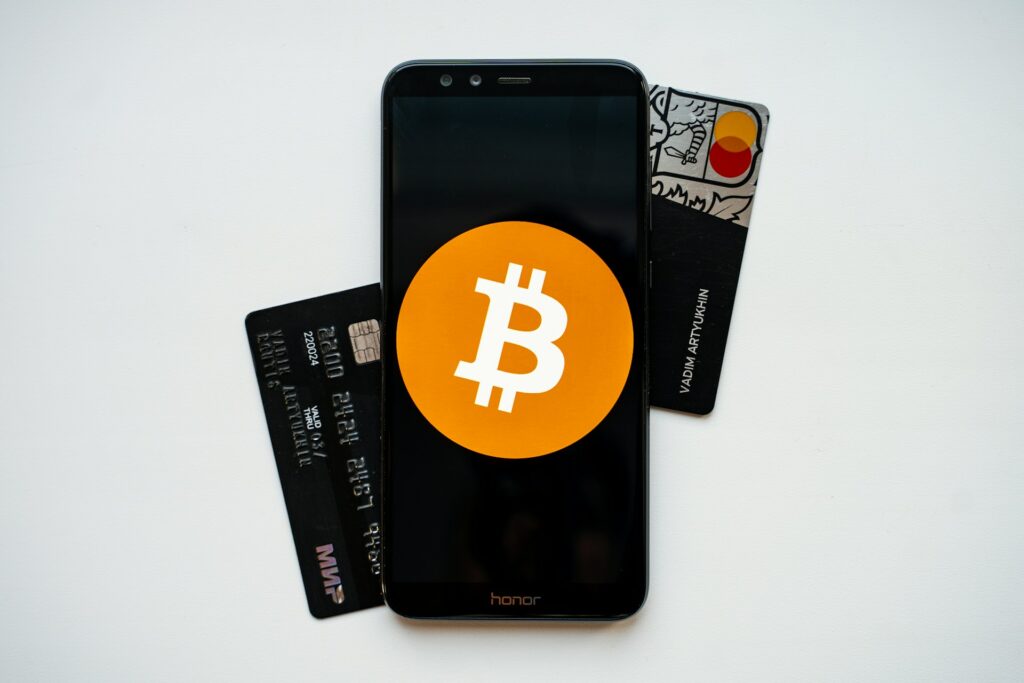What’s Bitcoin? The Complete Beginner’s Guide

What’s Bitcoin? The Complete Beginner’s Guide
Want to know everything about Bitcoin? 99Bitcoins translates Bitcoin into simple English, so even non-technical people can comprehend! This article explains Bitcoin for beginners, from what it is to how to acquire it.
Bitcoin is revolutionary, and I’ll explain why in plain English in today’s piece. See it as your Bitcoin blueprint.
Bitcoin Overview
Bitcoin
Bitcoin (0.20%) is the first decentralised digital money. The blockchain, a public ledger, records all transactions made with Bitcoin. Bitcoin provides you full control over your cash, unlike bank- and government-regulated assets. Growing popularity means more establishments accept Bitcoin as a payment mechanism.
What’s Money?
Money must be discussed before Bitcoin. Exactly what is money?
The essence of money is value. You pay me for my services. This money may be used to buy something valuable from someone else.
People have used several materials to depict money throughout history. Exchange mediums include salt, flour, the shells, and gold.
People have to think that something is valuable and will remain valued long enough for someone to redeem it.
Paper Money
We always trusted anything to symbolize money until about a century ago. After something occurred, we switched from trusting thing to trusting someone.
Let me clarify.
Paper money was established because transporting gold bars or other money for long journeys became too difficult.
A bank or government might offer to accept your $1,000 bar of gold in exchange for $1,000 in receipt certificates, or banknotes.
These paper pieces were simpler to carry and allowed you to spend one dollar on coffee without cutting your gold bars into multiple pieces. To get your gold back, just return $1,000 in banknotes to the bank and exchange them for the gold bar whenever required.
Paper became money for practicality and ease.
Eventually, macroeconomic shifts destroyed the tie between the document’s receipt with the gold it represents.
The process to leaving the gold standard is complicated, but governments convinced their people they were responsible for the value of paper money. Our consensus was, “Let’s forget about silver and sell paper instead.”
People kept trading receipts supported only by the government’s word.
Why did it keep working? Due to faith. Even without a product supporting paper cash, individuals trusted the government with creating fiat money.
Fiat Money
Latin fiat means “by decree.” Because the government mandates it, dollars, euros, and other currencies have worth. These are “legal tender”—coins or banknotes that must be accepted as payment.
The government gives today’s money its legal standing, which gives it value. Thus, trusting someone (the government) has replaced trusting something.
Fiat money having two fundamental drawbacks:
Centralized – A central authority issues and controls it. The government or the central bank.
No quantity restriction – The federal government or central bank may print as much as required to expand the money supply. Due to oversupply, printing money lowers the intrinsic value of each dollar, making your own money worth less. Prices may rise over time because your money’s buying power is falling. It costs more to purchase something that “cost less.”
Switching to Digital Money
Digital money was easy to adopt after fiat money. We currently have a central authority who issues money, so why not render it mainly digital and let it monitor ownership?
Credit cards, bank payments, PayPal, and other digital types of money are what most of us use these days. Physical money is scarce and shrinking every year.
How does digital money work? If I have a $1 file, why not duplicate it a million times and have a million dollars? This is the “double spend problem.”
Banks utilize a “centralized” approach to track ownership: a computer ledger. This ledger maintains a count for each account, which is something that everyone owns. Since we trust the bank and the bank trusts their computer, the answer is on this ledger in this computer.
You may not know, but numerous digital currency alternatives were tried. No one solved the double spending issue without a governing body.
Money centralization
Giving anybody authority over the cash supply gives them great power, which causes three key issues:
Corruption
Absolute power corrupts totally. With a duty to generate money or value, banks regulate the movement of value worldwide, giving them nearly infinite power.
Power corrupts, as shown by Wells Fargo’s scandal, when staff covertly opened millions of illicit bank and credit card accounts to boost income without consumers knowing for years.
Mismanagement
The central authority may mismanage money if its interests don’t correspond with those it governs. For instance, printing plenty of money to rescue a bank from collapse, like in 2008.
Too much money printing generates inflation and devalues citizens’ money.
Venezuela, whose the government has created so much money that its value has fallen, now weighs money instead of counting it.
Control
You cede all money control to an authority or bank. The government may freeze your bank account to prevent withdrawals at any moment. As in India a few years ago, the government may abolish the legal status of your currency even if you use just cash.
It was like this till 2009. Alternatives to the present monetary system looked hopeless. However, everything changed…
What’s Bitcoin?
Satoshi Nakamoto posted a paper online in October 2008. The whitepaper proposed a Bitcoin system.
This scheme promised digital money that addressed double spending without a central authority.
Bitcoin is a decentralized ledger, but what does it mean?
Let’s contrast Bitcoin to the bank. Most money nowadays is digital, therefore the bank keeps its own balance and transaction ledger. This ledger is housed on the bank’s main computer and is not visible. Nobody can see the bank’s ledger, and only the institution’s management controls it.
But Bitcoin is a public ledger. I can peep into the ledger at any moment to view all transactions and balances. Who owns these amounts and who remains behind every transaction is the sole mystery.
Bitcoin’s transactions are open, clear, and identifiable, but you can’t identify who’s sending what.
An example will illustrate. Below are Bitcoin ledger rows. In May 2010, one Bitcoin address delivered 10,000 Bitcoins to another.




